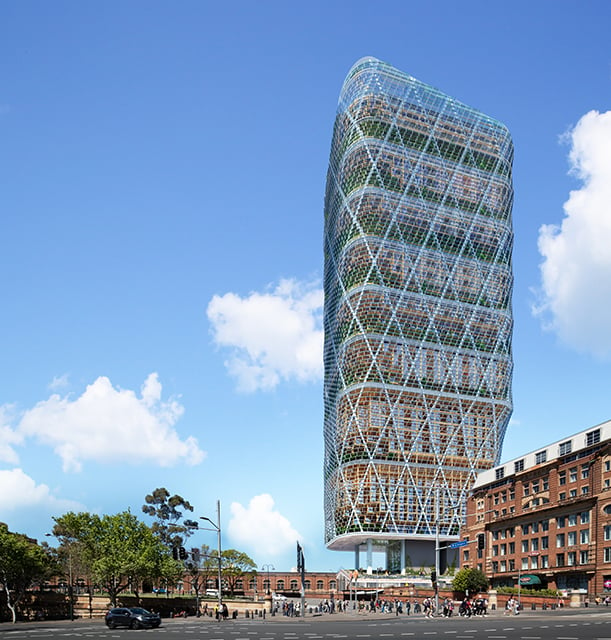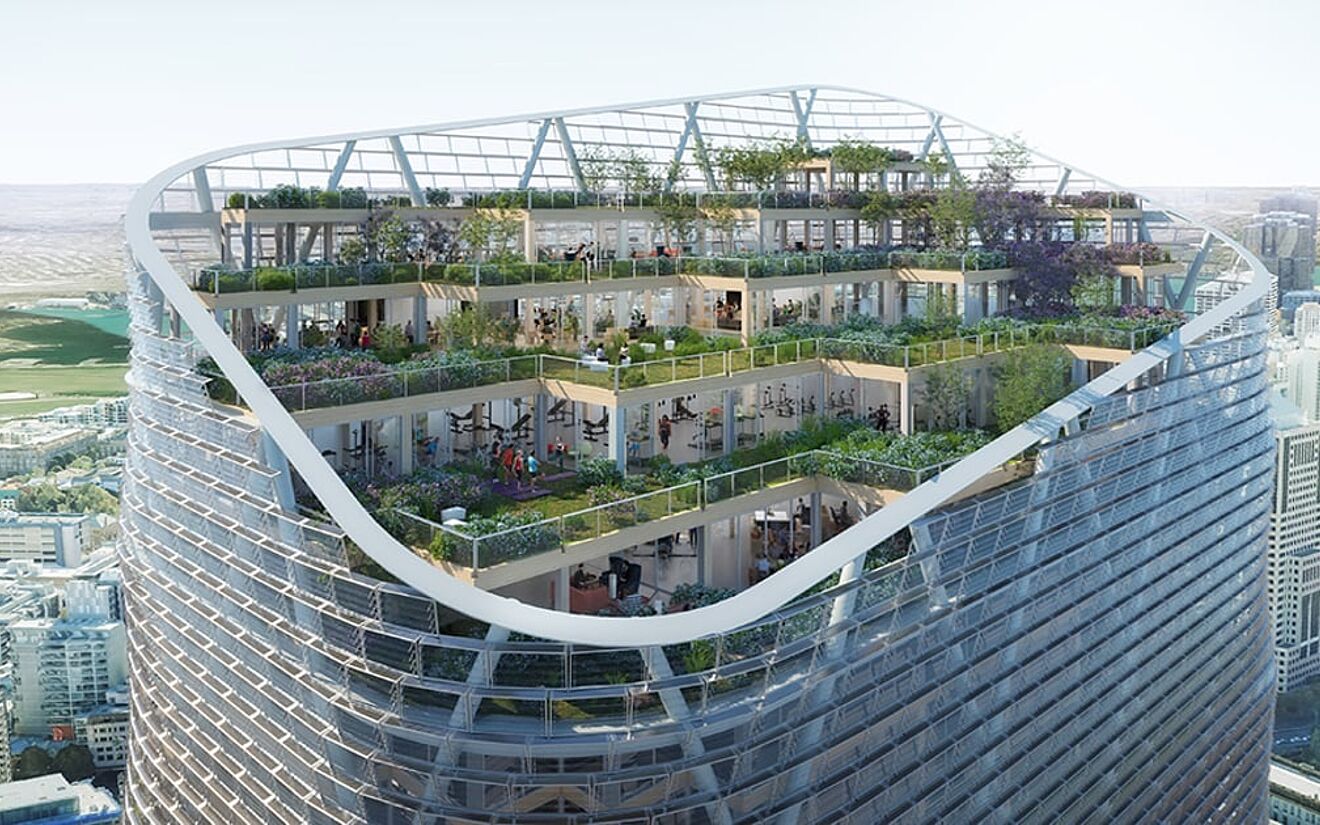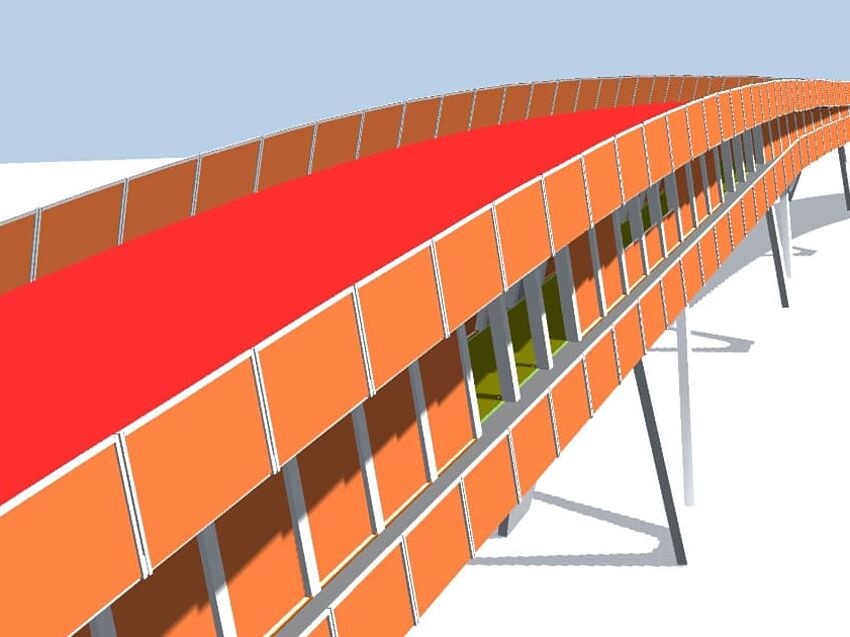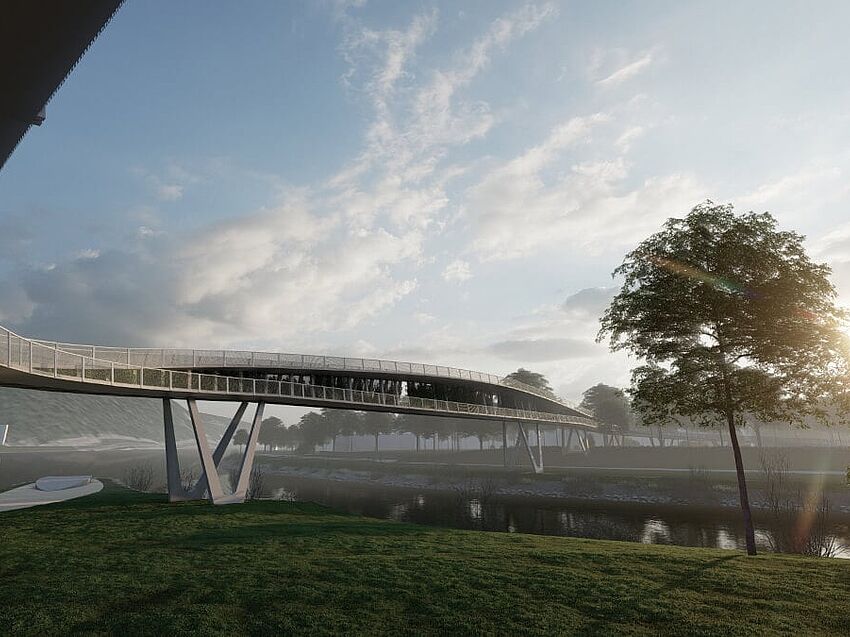Timber is one of the most environmentally friendly building materials, yet it has rarely been considered for use in high-rise construction – until now. Traditionally the preserve of concrete and steel for their superior structural performance, advances in wood engineering over recent years have seen taller timber structures appear around the world. Some of the tallest of these wooden buildings will be Canada’s Earth Tower, in Vancouver, Canada, designed by architects Perkins&Will, and the new Atlassian headquarters in Sydney, Australia, designed by SHoP Architects.
The Tallest Wooden Skyscrapers
Boasting 40 stories, Canada’s Earth Tower is a proposed mixed-used development that will combine a skyscraper providing 200 homes with a podium base that will contain a mix of office and retail spaces. These areas will open out to a large courtyard, while communal winter gardens will line the height of the skyscraper for residents to enjoy while providing a sense of community. A rooftop terrace and greenhouse provide further green areas for residents, while also offering excellent views. The total floor area of the proposed development is nearly 340,000 square feet.
Similarly, the proposed Atlassian headquarters will also be 40 stories (or 180m) tall and combines timber with a steel and glass façade. Featuring a staggered rooftop garden, as well as several indoor and outdoor green spaces, the building will take advantage of the warm Sydney climate to blur the boundaries between the building and its surroundings. It will also have self-shading capabilities to help prevent overheating through the glass façade, natural ventilation, and integrated solar panels.

Hybrid Timber Construction
Timber construction has traditionally been restricted in height due to concerns regarding the structural stability as well as fire resistance. However, new approaches to both the engineered wood that is used as well as the combination of timber and reinforced concrete mean that taller buildings can be constructed.
In Canada’s Earth Tower, fire-resistant cross-laminated timber (CLT) from local forests is proposed for the columns and floors within the skyscraper. To provide lateral stability to the structure, the core of the tower will be made up of reinforced concrete elevator shafts and an emergency staircase. In contrast, the Atlassian headquarters uses mass timber to create an internal core of wooden construction, with the steel and glass façade appearing to wrap the building. While both are very different approaches, they will significantly exceed the heights that have been achieved with timber construction in the past.

The Benefits of Timber Construction
Wood locks away carbon by trapping it within the material, which is referred to as carbon sequestration. However, during its lifespan, it also gives off significantly fewer greenhouse gas emissions during operation compared to traditional materials such as concrete. Moving to a hybrid timber construction technique therefore demonstrates a focus on creating more sustainable buildings, with both towers incorporating environmentally friendly features.
Canada’s Earth Tower is set to be a zero emissions building, which will also not consume fossil fuels while in use and has an energy target of just 40kWH/m²/year. In addition, the building is aiming for Passive House Certification, as well as incorporating ambitious plans for reducing potable water use and reusing rainwater. These environmental goals mean that the development will be part of the Canada Green Building Council’s Zero Carbon Buildings Pilot Program, which will help inform the development of a Zero Carbon Building Standard for the country.

The Atlassian headquarters plans to operate on 100 per cent renewable energy thanks to the integrated solar panels, as well as achieve net zero emissions upon its completion. Due to the timber construction element, the building will boast 50 per cent less embodied carbon during construction compared to a conventional building.
With these buildings, hybrid timber construction will help architects and engineers create more sustainable buildings that provide healthier and more energy efficient places to live and work.





